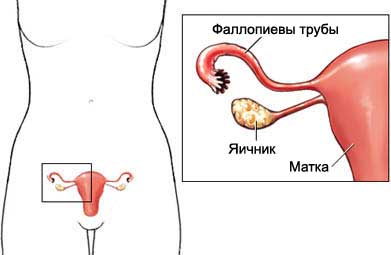In Vitro Fertilization (IVF) – Artificial insemination
Description of artificial insemination
In Vitro Fertilization (IVF) – process, in which the fusion of sperm and egg to create an embryo outside the body occurs (“in vitro”). Then the embryo is placed in the womb.

Reasons for artificial insemination
IVF is carried out, to help a woman get pregnant, when there were difficulties when trying to conceive naturally.
The procedure is most often performed when infertility, arisen as a result of the following problems:
- Damage to the fallopian tubes;
- Disorders of ovulation;
- Problems cervix;
- Male factor, such as low sperm count or poor sperm quality.
Possible complications of artificial insemination
If you plan to artificial insemination, the doctor will consider the risk of complications, which may include:
- The inability to conceive in any way;
- The appearance of the twins;
- Ectopic pregnancy (the embryo develops outside the womb);
- Problems, associated with anesthesia;
- Short-term and long-term negative effects from medications, promote fertility;
- Break ovary (rarely).
Factors, which can increase the risk of IVF, include:
- Age older women 40 years;
- Alcohol consumption.
How is artificial insemination?
Preparation for the procedure
The doctor will perform, or assign the following:
- Physical and pelvic examination;
- Testing for infertility you and your partner;
- Hormone therapy to stimulate the production of multiple eggs;
- Repeated blood tests and ultrasound, to follow the development of multiple follicles;
- It is necessary to choose the right time for the selection of mature eggs during ovulation.
Anesthesia
- During the selection of oocytes can be used general anesthesia, spinal anesthesia or intravenous sedation;
- With the introduction of fertilized embryos anesthesia does not apply.
Description of the procedure of artificial insemination
If a man has a healthy sperm, he must abstain from ejaculation for two or three days. Then the semen is collected by masturbation.
Scar tissue of the penis or other medical conditions can block the natural ejaculation. In this case, it may be made from testicular sperm aspiration. Sometimes the sperm of men can be assembled ahead of time and frozen. If the male partner is unable to produce viable sperm, can be used a sperm donor. If the number of viable sperm in men low, the probability of successful fertilization can be increased by direct administration of the sperm into the egg. It is called intratsitoplazmaticheskaya inaektsiya sperm (ICSI).
The selection of eggs
The selection of eggs produced under ultrasound guidance. The ultrasonic sensor has a needle, fixed to the end. Tools are introduced into the vagina. Ultrasound uses sound waves to explore the ovarian follicle development and definition of the egg in the ovary. The needle pierces the membrane of the follicles, after which the liquid is removed and the egg (so-called puncture and aspiration of ovarian follicles). Liquid egg immediately placed in a clean medium and sent to the hatchery.
Selected 50000-100000 of the most mobile, healthy sperm. They are mixed with eggs. Can sometimes be held intracytoplasmic sperm injection (ICSI). This can help increase the chance of fertilization. The culture is kept at normal body temperature in an incubator for 2-3 days. During this time the sperm fertilizes 60% -80% ova. After fertilization begins cell division and embryonic development.
The room of the embryo in the womb
The queen placed a certain number of embryos (usually 1-5). Fewer embryos reduces the likelihood of birth, eg, double or triple. More embryos can be frozen and used for future IVF cycles. They also can be used to fertilize other infertile couples.
Is inserted into the vagina of the catheter tube. She passed through the cervical canal into the uterine cavity. The embryos are then placed into the uterus. You can arrange face-down with his knees pressed to his chest. Also it can be used a special table, which will help to tilt the uterus down. This position allows to save embryos in the uterus due to gravity.
How long will the in vitro fertilization?
- The selection of eggs – 30 minutes or less;
- The room of the embryo in the womb – about 10 minutes.
Artificial insemination – Will it hurt?
In the selection of oocytes can be felt discomfort. To reduce it applies anesthesia.
Care after artificial insemination
Care in a hospital
After the selection of eggs need to rest in the hospital for few hours, before you go home.
Home Care
After embryo transfer procedures:
- You can return to normal activities within a few days;
- Follow the doctor's instructions for taking medications;
- We must return to the hospital through 10-12 days, to take a pregnancy test;
- If the pregnancy test positive, a few weeks will be assigned ultrasound examination, which will determine the number of established embryos;
- If all goes well, to start prenatal care. It is important to go to all scheduled activities.
IVF have to wait two weeks. Even if pregnancy occurs it remains the possibility of miscarriage. If pregnancy does not occur, next IVF attempt should be made, at the very least, a month later.
The probability of becoming pregnant within the first three attempts remains the same. Then begin to decrease the chance of pregnancy. Success depends on the age and cause of infertility. IVF successfully 25% -30% cases.
Contact your doctor after artificial insemination
After returning home, you need to see a doctor, If the following symptoms:
- Signs of infection, including fever and chills;
- Bad-smelling vaginal discharge;
- Vaginal bleeding;
- Abdominal pain or cramping;
- Cough, breathlessness, chest pain, severe nausea or vomiting;
- Any painful symptoms.
